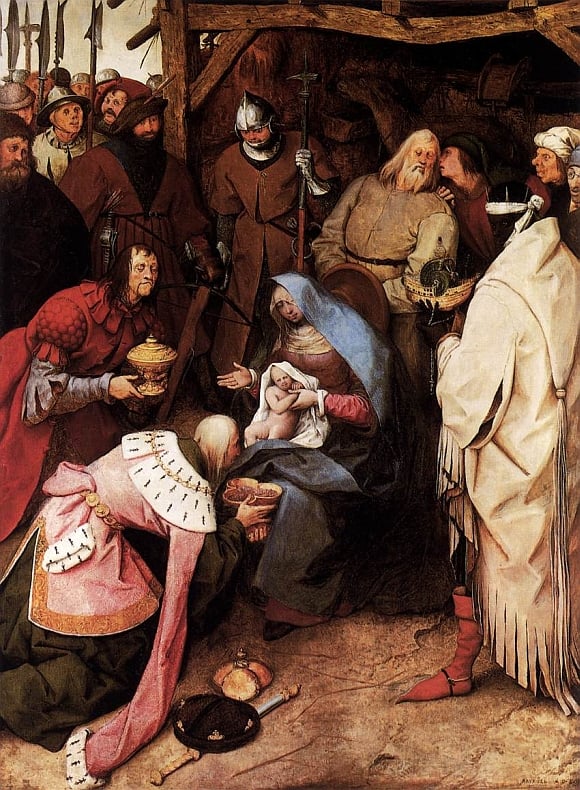
Immensity cloistered in thy dear womb,
Now leaves His well-belov’d imprisonment,
There He hath made Himself to His intent
Weak enough, now into the world to come;
But O, for thee, for Him, hath the inn no room?
Yet lay Him in this stall, and from the Orient,
Stars and wise men will travel to prevent
The effect of Herod’s jealous general doom.
Seest thou, my soul, with thy faith’s eyes, how He
Which fills all place, yet none holds Him, doth lie?
Was not His pity towards thee wondrous high,
That would have need to be pitied by thee?
Kiss Him, and with Him into Egypt go,
With His kind mother, who partakes thy woe.
—John Donne, Nativity from La Corona (1610)
This early poem from the collection La Corona is a prime example of the Donne paradox. The key to its understanding lies in contrasting the opening line “Immensity cloistered in thy dear womb,” with the contradictory “how He/Which fills all place, yet none holds Him.” The Nativity Donne presents is a historical reference, a few moments in time, standing for a message which is timeless and universal. The paradox moves in both time and space. The image of tight confinement figures often in Donne’s writings, poetical and theological, and its significance is unfolded best here: “We are all conceived in close Prison; in our Mothers wombs, we are close Prisoners all; when we are borne, we are borne but to the liberty of the house; Prisoners still, though within larger walls; and then all our life is but a going out to the place of Execution, to death.” (Easter Sunday 1619, Sermons, vol. 2, p. 107)
But the message of the Nativity, says Donne, is a message of purpose and direction on this path tread by endless humans across the ages: “Divers men may walke by the Sea side, and the same beames of the Sonne giving light to them all, one gathereth by the benefit of that light pebbles, or speckled shells, for curious vanitie, and another gathers precious Pearle, or medicinall Ambar, by the same light. So the common light of reason illumines us all; but one imployes this light upon the searching of impertinent vanities, another by a better use of the same light, finds out the Mysteries of Religion; and when he hath found them, loves them, not for the lights sake, but for the naturall and true worth of the thing it self.” This is a “supernaturall light of faith and grace,” he writes, that made its appearance at the Nativity, but it is a light of reason that enables humankind both to understand its maker and itself. (Christmas Day 1621, Sermons, vol. 3, p. 359.)
The Bruegel painting of the Adoration is almost unique among Breugel’s works in several respects. First, it has a portrait rather than landscape aspect. Second, it presents characters in a glorified way, reminiscent of the masters, such as Raphael, that Bruegel studied in Italy (notice the extraordinary attention paid to the elegant fur-trimmed robes and the careful tailoring characteristic of the High Gothic, something rarely seen in Bruegel’s works). The Adoration stands in stark contrast to most of his work, which presents figures in simple, quotidian poses, as caricatures, lacking any pretense. Here the elegance of the posing is striking and very unusual, though the faces and looks are sometimes idiocyncratic (yes, one of the soldiers on the right is wearing eyeglasses, and of course the presence of soldiers is itself quite unusual, though this is likely a way for Bruegel to protest the Spanish military occupation of his native Flanders). While unlike other Bruegels, it is a feast for the eyes, an extraordinary work of religious art, and a painting which merits a voyage to be seen. It hangs in the National Gallery in London.
Listen to Michael Praetorius’s In dulci jubilio (1607) in a performance by the Vienna Boys Choir:



